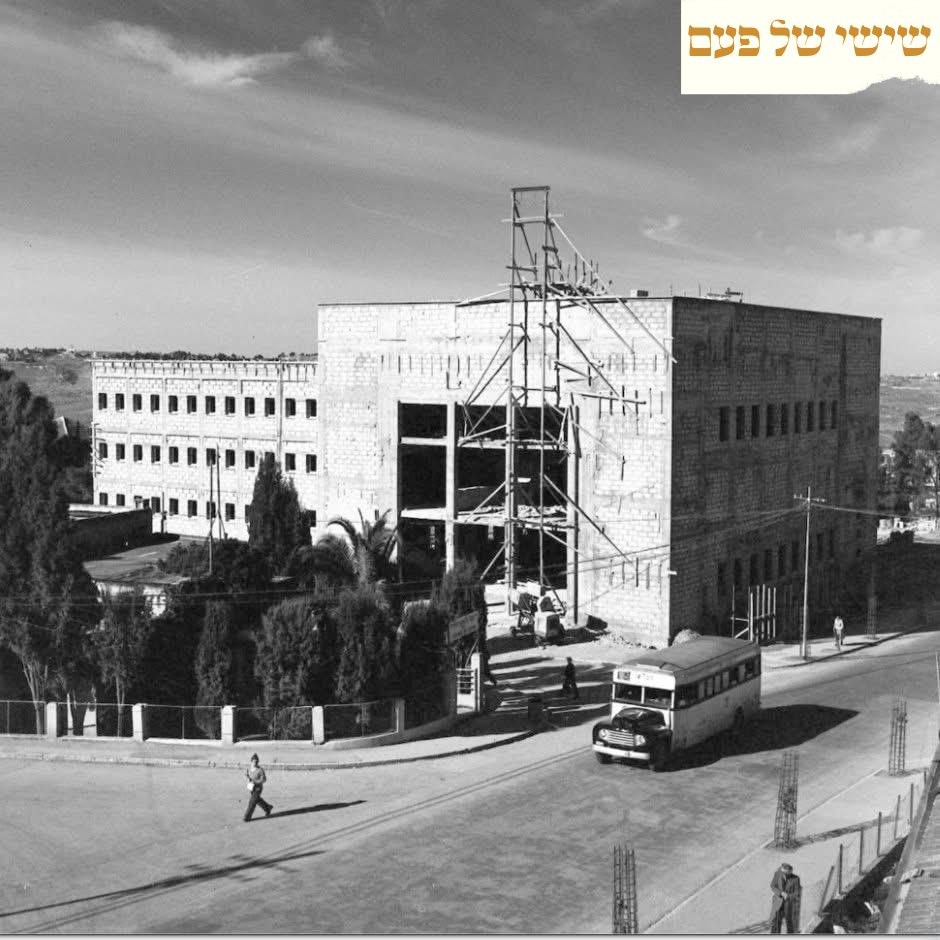Beit Ha’am Expansion and Preparations for the Eichmann Trial, 1960.
Another “Once Upon a Time in Jerusalem”.
And this time Beit Ha’am.
The current Beit Ha’am is located at the corner of Bezalel and Ussishkin streets.
But the original Beit Ha’am was established long before, in 1907, by members of the Second Aliyah who arrived from “civilized” Europe and were seeking some culture and a way to unite the community in Jerusalem through the Hebrew language.
Beit Ha’am was funded by member donations, ages 18 and up, with an annual fee.
The first building was located between HaNevi’im Street and HaHavatzelet Street, and was closed by the Ottoman authorities at the beginning of World War I.
Afterward, Beit Ha’am moved to HaNevi’im Street but was again closed due to lack of funding.
From 1934 until its final home on Bezalel Street, the location moved multiple times, from Eden Cinema to Edison Cinema, then to the Orion, and finally to the Perlman House on Jaffa Street.
In the 1940s, fundraising for a permanent building began, and the Jewish National Fund (KKL) allocated the land on Bezalel Street (shown in the photo).
The building was designed by architect Yaakov Benor-Kalter, and construction began, but the outbreak of the War of Independence and the siege on Jerusalem halted the building process.
On June 22, 1950, a groundbreaking ceremony was held to mark the resumption of construction. In 1955, the building was handed over to the Jerusalem Municipality, which appointed architect David Resnick to add more functions to the structure and continue the construction.
In 1960, following the capture of Nazi war criminal Adolf Eichmann and his extradition from Argentina by Nazi hunters and Mossad agents, construction was accelerated to complete the building in time to serve as the public courtroom, as seen in the photo.
In it, an Egged bus slowly climbs Bezalel Street alone, moving at the same speed cars do today, stuck in the usual endless traffic on that street.
The trial began on April 11, 1961, and the gallery was filled with Holocaust survivors, schoolchildren, and citizens who were able to witness the Nazi oppressor – an SS officer appointed as head of the Jewish Department, who oversaw and was directly responsible for the deaths of millions of Jews, standing inside a bulletproof glass booth, looking like a stammering, confused gray bureaucrat, stripped of uniform, rank, and guards.
The trial drew massive attention both in Israel and around the world. Dozens of foreign journalists and photographers lined up outside Beit Ha’am every morning, and the trial was broadcast live on the radio daily.
It sparked deep interest worldwide and brought up painful memories for Holocaust survivors, including the families of the victims who could not speak for themselves, standing as unseen witnesses in the courtroom.
In the early 1980s, a French millionaire donated a large sum to the Jerusalem Foundation for renovating the building and redesigning its façade.
Under Resnick’s planning, the building was restored and renamed Gerard Behar Center, in memory of the donor’s son who died in a car accident.
Today, the newly renovated Beit Ha’am was completed in early 2022. As part of the renovation, a memorial room for the Eichmann trial was established, along with a new café. The building now hosts music and dance performances, plays, conferences, and welcomes about 250,000 visitors a year.
This is our Jerusalem, from a small cultural hall initiated by Second Aliyah immigrants who left Europe to rebuild the Jewish state, to the hall where the greatest oppressor of European Jewry stood trial fifty years later, and now to a modern hall that fulfills the vision dreamed up 120 years ago.
Wishing a peaceful Shabbat to those near and far from Jerusalem.
May the hostages return home safely, along with our IDF soldiers.
May we merit true unity among ourselves, and may peace come upon Israel.
Photographer unknown – from the Egged Archive.





